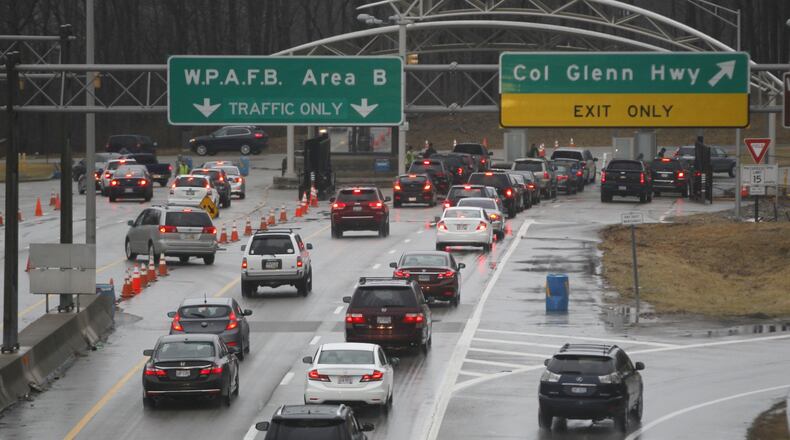Military and federal spending support about 6% of the state’s overall economy.
“Six percent is definitely a good-sized portion for each sector,” said Matt Schwalb, senior analyst with the Denver-based Matrix Design Group, who presented the data during Tuesday’s Ohio Defense & Aerospace Forum.
The economic impact of federal and military installations in Western Ohio — which includes the Dayton and Springfield areas —amounts to 17.1% of the region’s economy, the Matrix data indicated.
Matrix counted 40,900 direct jobs from that impact in the state’s western region, with 62,300 indirect or “induced” jobs.
“We know defense contracting obligations and military missions in the Dayton region continue to grow, providing excellent career opportunities for our residents and acting as a catalyst for the creation of many successful local businesses,” said Jeff Hoagland, president and chief executive of the Dayton Development Coalition. “The impact makes up 17 percent of our economy, extending beyond defense contractors to businesses that support the installations, their employees, and their families.”
Federal workers tend to be well paid compared to other workers, according to the Matrix report. Ohio federal workers earn about 230% of the average Ohio worker, according to the firm’s data. And Ohio military service members earn, on average, about 103% of the average Ohio worker.
“These are very high paying jobs,” Schwalb said. “These are great, quality jobs.”
Contracts with work performed in state have fallen a bit from 2008, from $8 billion to just over $7 billion last year, he also said. However, Ohio has seen its share of high-paying professional, technical and scientific contracts trend up since 2016, he added.
And Ohio’s veteran and military retiree populations have fallen a bit, as well, from more than 935,000 to about 741,000 since 2008, even as benefits for retirees and veterans in the state have more than doubled from $2.6 million to more than $6 million, Schwalb said.
Credit: Bill Lackey
Credit: Bill Lackey
But Western Ohio still has a sizeable population of military retirees, just over 14,000 or nearly 30% of the state’s military retirees.
The two-day virtual defense forum is focusing on the importance of Ohio’s 10 military installations, among other assets. Joe Zeis, Ohio Gov. Mike DeWine’s senior advisor on aerospace and defense matters, said DeWine’s first direction to him when he took the job in 2019 was: Ohio must protect federal installations already here.
“And really, we have to expand,” Zeis said.
DeWine noted that the state’s private development arm, JobsOhio, is focused on the growth of federal and defense installations. “They’re not isolated to one region, but span the state of Ohio.”
In Ohio, some 3,200 defense contractors execute more than 291,000 defense contracts, DeWine said.
“We have the defense assets, the industrial capabilities and that all-important workforce,” he said.
The report revealed “that Southwest Ohio has seen significant economic growth as a result of the $7 billion the region received in defense-related investments,” U.S. Rep. Mike Turner, R-Dayton, said in a statement Tuesday. “Wright-Patt and other federal Installations around the state bring over 100,000 jobs to the Dayton region and these jobs increased despite the pandemic.”
In early 2019, direct and indirect business and employee spending from Wright-Patterson Air Force Base, the Dayton VA and Springfield Air National Guard base was said to have a $16.7 billion impact on the local Dayton-Springfield economy.
Statewide, Matrix counted nearly 111,000 direct jobs from federal and defense facilities, with nearly 270,000 indirect jobs, with a total economic impact of nearly $40 billion.
About the Author


